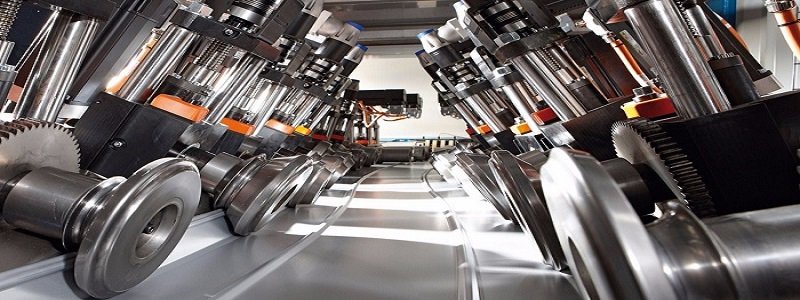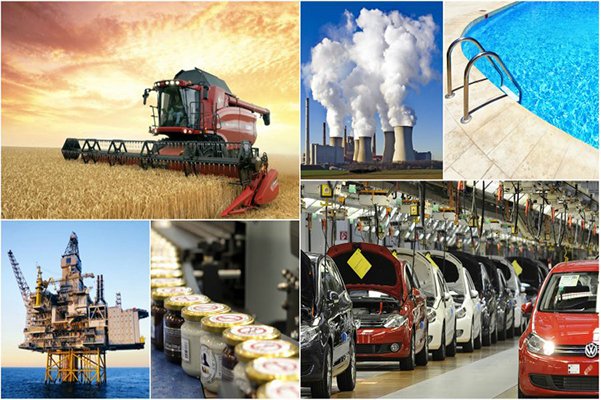
What is Alloy Steel?
In order to increase the different properties of the material, alloy steel is alloyed with a variety of additional elements at a weight percentage ranging from 1% to 50%. This process is known as alloying. Today, many different kinds of alloy steel are manufactured; some examples are high-strength low alloy (HSLA) steel, stainless steel, microalloyed steel, and others.
Alloy Steel Chemical Composition
Boron, silicon, manganese, nickel, chromium, molybdenum, vanadium, and nickel are some of the elements that are usually found in these compounds. Less common elements include aluminium, cobalt, copper, cerium, niobium, titanium, tungsten, lead, zinc, and zirconium.

Difference Between High Alloy and Low Alloy Steel
High Alloy Steel :
A high proportion of alloying elements is what distinguishes high-alloy steels from other types of steels. Stainless steel, which must have at least 12 percent chromium by weight, is the kind of high-alloy steel that is used most often. In general, stainless steel may be broken down into three different fundamental types: martensitic, ferritic, and austenitic. Because of their high level of hardenability, low chromium content, and general use in the cutlery industry, martensitic steels are the kind of steel most often utilised. The term "high alloy steel" refers to an iron alloy that has 10.5% chromium added to it. In addition, there is a blend of 10% alloy in high-alloy steel. Latent layer is the name given to the thin layer of oxide that forms on the surface of the steel when chromium oxidises it. In addition, the price is much lower than that of low alloy steel. Because of the high levels of carbon and manganese that are added, the steel is able to take on an austenitic structure. The increasing concentration of chromium offers an increased level of protection against erosion. As a result of the high chromium concentration, steel with a high alloy content might reduce consumption. In addition to these elements, high-alloy steel may also include trace amounts of manganese and silicon. In very hot gases and fluids, and on a variety of components operating at high temperatures, it is exploited for the advantage it provides. In common parlance, high-alloy steels are referred to as stainless steels. They are well renowned for having high degrees of resistance to corrosion. There are three categories of stainless steels that are utilised in the building of pressure vessels and pipes. These categories include austenitic stainless steels, ferritic stainless steels, and martensitic stainless steels.
Low Alloy Steel :
The low alloy steel is a significant improvement over the carbon steel. For instance, in comparison to carbon steel, this alloy has superior mechanical qualities and has increased resistance to corrosion. The proportion of alloying elements in low-alloy steels is typically between 1 and 5 percent, which is much lower than the average. Depending on the alloy, these steels provide quite distinct advantages in terms of their strengths and their applications. Manufacturers of large diameter flanges generally choose alloys for a certain mechanical attribute while making their selection. Low-alloy steel is beneficial for a multitude of projects due to the wide range of alloys that can be made with it. Some examples of these projects are seamless rolling ring forging and studding outlet manufacture. Low alloy steel is a kind of steel that is produced when the percentage of nitrogen, chromium, and other alloy elements is less than 10.5%. Low alloy steel is one of the types of steel that may be produced. The low alloy steel has between 0.5% and 9% chromium and between 0.5% and 1% molybdenum in its composition. Because of the alloy feature, it has a stronger hardening ability and acceptable weldability, while having a carbon concentration that is lower than 0.20 percent. The resistance of low alloy steel to oxidation and corrosion is boosted by chromium, while molybdenum works to increase the material's strength when exposed to high temperatures. When placed in an environment with a low temperature, steel will have a greater strength but reduced toughness and elongation; as a result, there will be an increased likelihood of brittle fracture. To improve the low-temperature tensile strength of carbon steel and create low alloy steel, an amount of nickel ranging from 2.5% to 3.5% is added to the carbon steel.
Steels with low and high levels of alloying have improved physical qualities in comparison to carbon steel. However, the most important distinction between low and high alloy steel is that low alloy steels have an alloying element content of less than 0.2 percent, while high alloy steels have an alloying element content of more than 5 percent. In terms of its chemical composition, low alloy steel is made up of iron, a small amount of carbon (less than 0.2%), and various other alloying elements like nickel, chromium, molybdenum, vanadium, boron, and copper. High alloy steel, on the other hand, is made up of iron, chromium, nickel, carbon, manganese,
 "GOVERNMENT RECOGNISED STAR EXPORT HOUSE"
"GOVERNMENT RECOGNISED STAR EXPORT HOUSE"



 India
India Japan
Japan Russia
Russia United States
United States Saudi Arabia
Saudi Arabia Kuwait
Kuwait Singapore
Singapore Malaysia
Malaysia UAE
UAE Germany
Germany Italy
Italy China
China UK
UK Canada
Canada Iran
Iran Thailand
Thailand South Korea
South Korea Turkey
Turkey Morocco
Morocco Costa Rica
Costa Rica Kazakhstan
Kazakhstan Philippines
Philippines Egypt
Egypt Vietnam
Vietnam Oman
Oman Australia
Australia Qatar
Qatar Portugal
Portugal Mexico
Mexico Brazil
Brazil France
France South Africa
South Africa Jordan
Jordan Spain
Spain Hong Kong
Hong Kong Netherlands
Netherlands Indonesia
Indonesia Taiwan
Taiwan Nigeria
Nigeria Bangladesh
Bangladesh Iraq
Iraq Ukraine
Ukraine Poland
Poland Romania
Romania Cyprus
Cyprus Angola
Angola Colombia
Colombia Norway
Norway Chile
Chile Tobago
Tobago Greece
Greece Czechia
Czechia Belgium
Belgium Sri Lanka
Sri Lanka Myanmar
Myanmar Venezuela
Venezuela